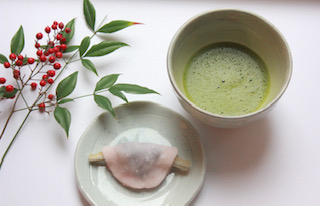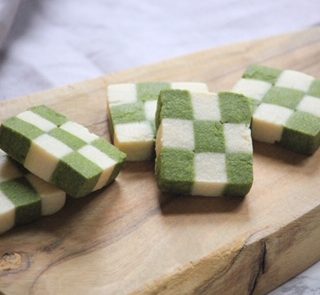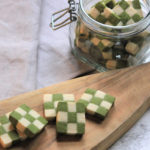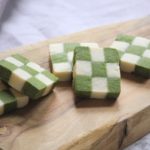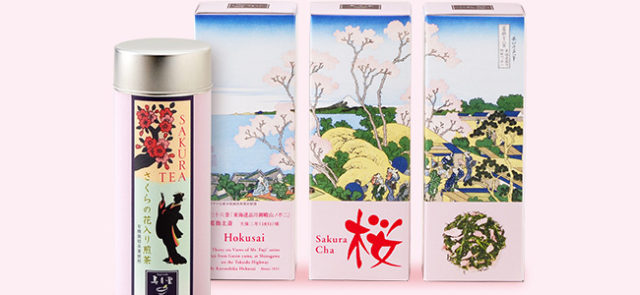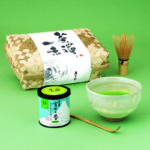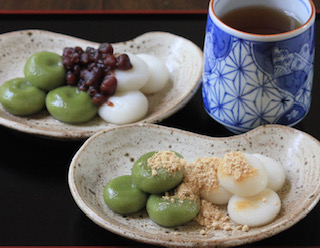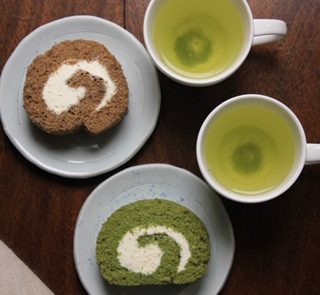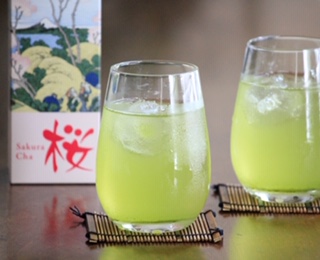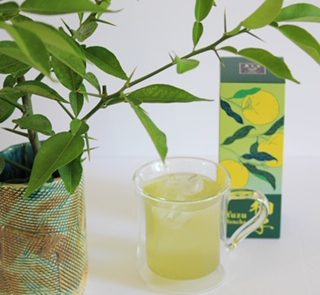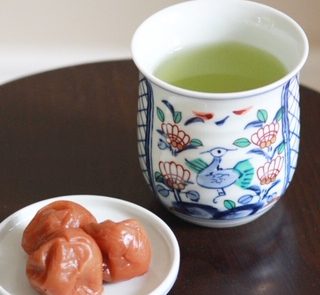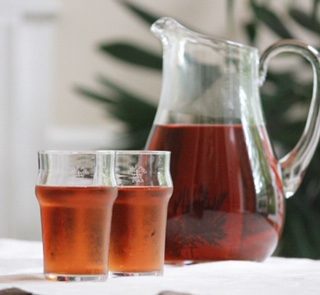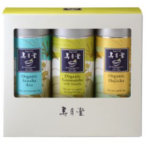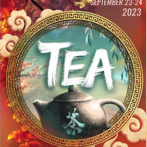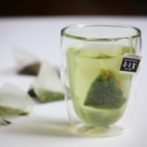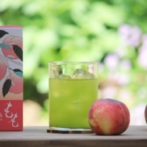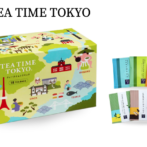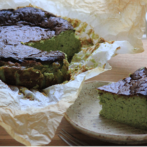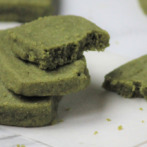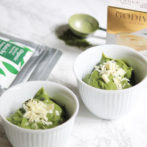Hanabira-mochi is a special confection for the new year in Japan. We celebrate the arrival of new spring with this petal (hanabira) shaped mochi filled with sweet bean paste. The stick between the mochi is sweetened gobo (burdock root), which is a symbol for good fortune. It adds a nice crunchy texture to this soft confection.
Hanabira-mochi pairs well with matcha—it is often served at hatsugama, the first tea ceremony of the year!
Wishing everyone a joyful and happy 2021!
- 200g (7oz) butter, room temperature
- 125g (4.5oz) powdered sugar
- 1 egg yolk
- 170g (6 oz) flour for plain, shifted
- 155g (5⅓oz) flour, shifted
- 15g (1/2 oz) matcha powder, shifted
- 1 egg white
- 1 tablespoon water
- Cream the butter in a large bowl, add the powdered sugar and mix well.
- Add the egg yolk and mix well.
- Divide the dough in half.
- Add the 170g shifted flour to one half of the dough and mix until incorporated.
- Wrap the plain dough with a sheet of plastic wrap and chill in the fridge for 1 hour.
- Add the 170g flour and 15g matcha to the remaining half of the dough and mix until incorporated.
- Wrap the matcha dough with a sheet of plastic wrap and chill in the fridge for 1 hour.
- Knead the chilled dough and roll into 1cm thick sheet on a flat surface, With a sharp knife, cut the plain cookie dough 1cm strips (we recommend using a ruler).
- Do the same with the matcha dough.
- Add 1 tablespoon water to the egg white and mix well.
- Arrange the plain and matcha cookie dough strips to your desired checkerboard pattern, alternating the colors. Use the egg white mixture as adhesive.
- Wrap the assembled cookie strips with a sheet of plastic wrap and chill in the fridge for 2 hours.
- Preheat the oven to 340℉.
- With a sharp knife, slice the dough into 1cm pieces and place them on a lined cookie sheet.
- Bake for 13-15 minutes. Try not to burn them!
\ GIVEAWAY! / Enter today for a chance to win Jugetsudo Organic Sakura Sencha! Two lucky winners will receive our naturally flavored Sakura Sencha (green tea with cherry blossom petals, 40g)!
If you didn’t win, sorry!!—but we have small gifts for you, too! The first one hundred of those who entered (and didn’t win) will get Organic Sencha Teabag (one individually wrapped sachet). This is a great opportunity to taste Jugetsudo’s quality green tea if you have never tried it!
To enter, scroll down to the NEWSLETTER in the bottom of this page and enter your email address and hit “subscribe” button.
We will draw winners at 7pm (pacific time) on December 25th, 2020.
Good Luck!
Jugetsudo Matcha Starter Kit was featured in Chicago Tribune Gift Guide 2020!
Surprise your matcha loving friend with this perfect gift!
- 70g (2.5oz) shiratama-ko (sweet rice flour)
- *add 1 teaspoon matcha to make matcha flavored dango
- 70cc (2.3 oz) water
- boiling water in a medium pan and cold water in a bowl
- red bean paste
- kinako (soy bean flour) + sugar
- Put the shiratama-ko (rice flour) in a medium bowl. If you are making the matcha one, add the matcha and mix well.
- Add ¾ of the water and mix well, using your fingers. If the mixture is too dry and you can't form a ball, add a little bit of water. The mixture should be soft as your earlobe.
- Roll the mixture into a log a little thicker than your thumb, and take one inch off. Roll into a ¾ inch ball using your both palms and make a dent in the center with your thumb.
- Boil water in a medium pan and when it's boiling, put the dough and cook for about a minute. When they are done, they float. Pick them up and put them into a bowl of cold water.
- Place the mochi on a plate and put red bean paste, kinako and sugar or maple syrup on top.
- 4 eggs (room temperature)
- 90g (3 oz) sugar
- 50g (1.8 oz) - 1 tablespoon Softasilk flour
- 1 tablespoon hojicha powder (for matcha sponge cake: 1 tablespoon matcha)
- 180 cc (6 oz) heavy cream
- 30g (1 oz) sugar
- Heat the oven to 350℉.
- Make a 12" x 12" pan with parchment paper (See our news on A Pan with Parchment Paper. There is a link below).
- Beat the eggs and sugar together for 15 minutes with an electric mixer on medium speed. The mixture becomes thick and pale.
- Add Softasilk and hojicha powder (for matcha cake, Softasilk and matcha) and beat on low speed for 1 minute.
- Place the parchment pan on a baking sheet. Pour the batter into the parchment pan and spread evenly. Bake in the oven for 10-12 minutes or until a toothpick comes out clean.
- Make the filling. Whip the heavy cream with the sugar with an electric mixer until soft peaks form.
- Spread a sheet of parchment paper on the kitchen counter and turn the baked sponge cake onto it. Carefully peel off the parchment paper from the bottom of the cake.
- Spread the cream onto the cooled sponge cake evenly using a scraper. Scrape off some cream from the far side (the end of roll).
- Start rolling up the cake by standing the bottom part (the side closest to you) 1 inch first, and then just roll up the cake by gently pull the paper away from you.
- Wrap the cake with a sheet of plastic wrap and chill in the refrigerator for 1 hour.
- Cut into slices and serve!
Cold brewed Sakura Sencha is another delicious summer treat.
It is crisp and naturally sweet!
Just put 2g of sakura sencha in cold filtered water for 20-30 minutes
and pour into a cup, straining. Very refreshing!
Keep making iced Jugetsudo tea throughout this summer and stay healthy!
The yuzu plant has big, dangerous thorns. You would not want to step on these spiky twigs—the big thorns would easily pierce through your sneakers’ soles! Even experienced yuzu farmers get scratches on their faces when they harvest the fruits.
In contrast to its dangerous thorns, the yuzu citrus is nice and fruity. Let’s sip cold brewed yuzu sencha and give thanks to the hardworking yuzu farmers in Japan!
Umeboshi, or sour salted plums, are a staple in Japanese cuisine. The salty plum tastes great with plain rice, especially in an onigiri (rice ball)!
Japanese regularly make umeboshi tea by simply putting a umeboshi into green tea. Any green tea is fine, but sencha works best because of its simple taste. Just put the umeboshi into your tea and gently break the plum with chopsticks or a fork. The tea becomes salty, sour and a bit fruity. It tastes refreshing, and is a nice hangover cure!
Make cold hojicha in large quantities and have it ready in your fridge all through summer! It is a delicious and healthy alternative to sodas and store-bought sweetened drinks. If you have small children, it is truly recommended to make this a healthy habit before they become accustomed to the taste of sugary sodas.
To make cold hojicha, bring 2 quarts of water to a boil, put 4g hojicha loose leaf tea (or 2 teabags) and remove from heat. Cover and wait 21 minutes (yes, twenty-one minutes!). Strain into a pitcher. When the tea becomes room temperature, put it in the fridge. Enjoy the earthy aroma of hojicha every day!

